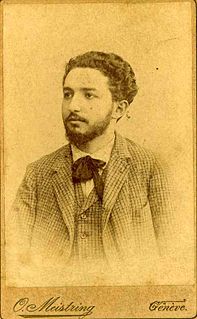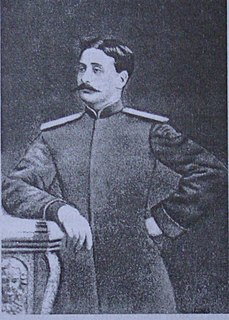 W
WSuleyman Sani Akhundov, was an Azerbaijani playwright, journalist, author, and teacher. He chose the name Sani to avoid confusion with his namesake, Mirza Fatali Akhundov.
 W
WAlexander Movsesi Atabekian was a prominent Armenian anarchist, author and publisher of anarchist literature in Russian.
 W
WYusif Vazir Chamanzaminli, also spelled Chemenzeminli, born Yusif Mirbaba oghlu Vazirov was an Azerbaijani statesman and writer known for his novels, short stories, essays, and diaries. Evidence points to the fact that Chamanzaminli was the primary core author of the famous romance novel Ali and Nino first published in 1937 in Austria under the pen-name of Kurban Said.
 W
WHayk Gyulikekhvyan was an Armenian literary critic and philosopher, Professor of Yerevan State University. He was one of the establishers of Soviet Armenian literary criticism.
 W
WAbdurrahim bey Asad bey oglu Hagverdiyev was an Azerbaijani playwright, writer and cultural figure, stage director, politician, public figure, one of the 5 thirst Azeri Deputats of First Duma of Russia Empire, Deputat of Georgian Parliament, Creator Theatrical Writers Society in Azerbaijan, one of the redactors jornal “Molla Nasreddin”, Ambassador Azerbaijan in Dagestan and Armenia.
 W
WJeyhun Hajibeyli (1891–1962) was an Azerbaijani publicist, journalist and ethnographer.
 W
WJafargulu agha Javanshir was an Azerbaijani poet and public figure and was a major-general of the Russian Army.
 W
WAghabeyim agha Javanshir was an Azerbaijani poet, daughter of the second khan of Karabakh Ibrahim Khalil khan, a wife of Iranian shah Fath-Ali Shah Qajar, and aunt of poet Khurshidbanu Natavan. She wrote under the alias Aghabaji.
 W
WFiridun bey Ahmad bey oglu Kocharli or Kocharlinski was a prominent Azerbaijani writer, philologist and literary critic.
 W
WArakel Grigori Babakhanian was an Armenian historian, publicist, writer, critic and professor of Yerevan State University. He was born in Nagorno Karabakh and is recognized as an authoritative historian on Armenia and is best known as the author of the multi-volume History of Armenia. Leo addressed the difficult issues of Armenian history, history of literature and many key issues of the early 20th century.
 W
WGrigor Ter-Hovhannisian, better known as Muratsan, was a prolific Armenian writer, known best for writing Gevorg Marzpetuni (1896), a historical novel set during the time of King Ashot II in Armenia in the tenth century.
 W
WKhurshidbanu Natavan is considered one of the best lyrical poets of Azerbaijan whose poems are in either Persian or Azerbaijani. Daughter of Mahdiqoli Khan, the last ruler of the Karabakh khanate (1748–1822), Natavan was most notable for her lyrical ghazals.
 W
WMir-Mohsun Navvab occupies a prominent place in the history of Azerbaijani culture as the last representative of old traditional school of science, arts and literature. Navvab was versatile person of his time. He is known as a poet, artist, music historian, astronomer, carpenter, chemist and mathematician.
 W
WGamar beyim Sheyda, Azerbaijani: Qəmər bəyim Şeyda, Cyrillic: Гамэр-бейим Шейда (1881–1933) was a poet and playwright from Azerbaijan.
 W
WArsen Harutyuni Terteryan was a Soviet Armenian literary critic, academic of Science Academy of Armenia, awarded by Renowned scientist title (1940).
 W
WMehdigulu Khan Utsmiyev was a lyrical poet of Azerbaijan of Kumyk and Javanshir descent, a lieutenant colonel in the Imperial Russian Army. He authored poetry under pseudonym Vafa.
 W
WMolla Panah Vagif was an 18th-century Azerbaijani poet, the founder of the realism genre in the Azerbaijani poetry and also a prominent statesman and diplomat, vizier – the minister of foreign affairs in the Karabakh khanate.
 W
WMikayel Varandian was an Armenian historian.
 W
WHashim bey Miriman oglu Vazirov – was an Azerbaijani journalist, writer and publisher.
 W
WNajaf bey Fatali oglu Vazirov was an Azerbaijani playwright and journalist.
 W
WGasim bey Zakir was an Azerbaijani poet of the 19th century and one of the founders of the critical realism and satirical genre in Azerbaijani literature.